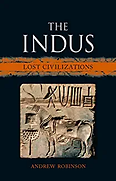

Nukes in Ancient India?
Being a debunkhead is not easy. You must start from the unshakeable premise that lost ancient technology, advanced prehistoric civilizations, and past visitations by extraterrestrials are impossibilities, and then contort yourself explaining the unexplainable from within your own narrow frame of reference, never worrying how patently lame your explanations might be.
Hamlet famously said, “There are more things in heaven and earth, Horatio, than are dreamt of in your philosophy.” Antiquity is filled with astounding mysteries. We do not have all the answers. Sometimes we must accept the mysteries. The best we can do is examine the available evidence, embrace possibilities, and search for more evidence (and feel our passion flowing with every step).
J. Robert Oppenheimer, the father of the nuclear bomb, was deeply interested in philosophy – especially the Hindu scripture known as the Bhagavad Gita, which is part of a larger epic known as the Mahābhārata. He often gave copies of the Gita as gifts to friends and always kept a well-read copy by his own work desk.
Recalling the US’ first successful detonation of a nuclear device at Alamogordo, Oppenheimer quoted from the book directly: “Now I am become Death, the destroyer of worlds.” When asked if the first nuclear device that went off was the one at Alamogordo, Oppenheimer replied, “Yes… in modern times.”
In modern times??? What is up with that, Bobby? And why the fascination with ancient Hindu scripture? Is there a connection between the Mahābhārata and nuclear weapons?

Let us examine the evidence and embrace the possibilities.
The Mahābhārata tells of a great war between two groups of cousins. The stories were passed down orally from generation to generation and describe events some say had occurred centuries earlier. Others, however, speculate that the events involved an ancient civilization that had existed as much as 24,000 years ago. Here is a particularly interesting passage:
Gurkha, flying in his swift and powerful Vimana, hurled against the three cities of the Vrishnis and Andhakas a single projectile charged with all the power of the universe. An incandescent column of smoke and fire, as brilliant as ten thousand suns, rose in all its splendor. It was the unknown weapon, the iron thunderbolt, a gigantic messenger of death, which reduced to ashes the entire race of the Vrishnis and Andhakas.
The corpses were so burnt they were no longer recognizable. Hair and fingernails fell out, pottery broke without any apparent cause, and birds turned white. After a few hours, all foodstuffs were infected. Any target hit by the Brahmastra would be utterly destroyed; the land would become barren and lifeless, rainfall would cease, and infertility in humans and animals would follow for eons of time.
Sounds like the description of a nuclear war, does it not? Then again, maybe it was just writers with imagination. If Indian culture could give us Buddhism, advanced mathematical concepts, chess, Bollywood, bull surfing, and the Nehru jacket, anything is possible. It might be helpful if there were archaeological evidence to corroborate the story of a nuclear war.
And there is.
Mohenjo-Daro and Harappa, both located in present-day Pakistan, were the two great cities of the ancient Indus civilization that flourished 5,000 years ago. Not far from those locations, in Rajasthan, India, investigators found a three-square-mile layer of radioactive ash, alarming rates of birth defects and cancer, and levels of present-day radiation so high the area was cordoned off. Astonished scientists then apparently unearthed the ruins of an ancient city where they found possible evidence of an atomic blast from 8,000 to 12,000 years ago.
Excavations in Mohenjo-Daro and Harappa revealed ancient, unburied skeletons strewn about the cities' streets as if some instant, horrible doom had taken place. Some were even holding hands. The skeletons had an extremely high level of radioactivity, comparable only to skeletons found in Hiroshima and Nagasaki. Excavators also found thousands of fused lumps consisting of clay vessels that appeared to have melted together in extreme heat. Remains of city building walls showed that bricks had melted on the sides of walls that had faced toward a central point, but not on the other sides. Such melting could have occurred only at temperatures above 1,500 degrees.
Awaiting your response, debunkheads.






